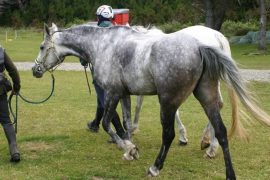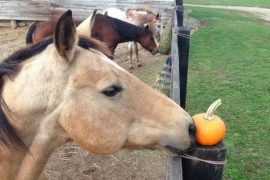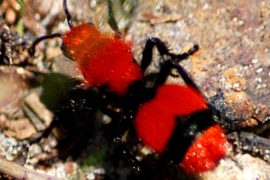Anyone who buys new aquarium plants pays attention to healthy, strong plants. When placing them in the aquarium, there are a few things to consider so that the aquatic plants feel comfortable right from the start. In this way, you ensure that the pupils thrive and are not unnecessarily weakened or injured. We will tell you how to use plants in your aquarium and what you need to pay attention to when planting and preparing.
Put plants in a bunch in the aquarium
If you would like to use plants in the aquarium that you bought in the bundle, proceed as follows:
- Shorten the cuttings down to the healthy tissue.
- Remove the bottom two leaf knots. One to two centimeters of the petiole can remain.
- Plant the bundle plant for the aquarium in such a way that the lower nodes, but never the leaves, are buried.
Tip for the right cutting before you put the plants in the aquarium: The stalks of the bunch of plants should not be crushed. It is best to use very sharp scissors or a razor blade. Never pinch off the stems of the aquarium plants with your fingernails. This will damage the plant. Rotting may occur after being placed in the aquarium. In the worst case, the entire aquarium plant dies.
Some bunch plants come with a lead band or ring. They serve to keep the plants on the ground in the sales tank. If you want to use ringed plants in the aquarium, we advise you to remove the ring or the lead sleeve and follow the steps above.
Vallisneria in the aquarium: insert and prepare plants
Plant Vallisneria correctly? Putting this popular aquarium plant in the aquarium is not difficult:
- Before planting the aquatic plants, remove the outer leaves.
- Any kinked sheets will be shortened up to the crease.
- The roots are only left long enough for the aquatic plants to find enough support in the ground. Vallisneria usually forms new roots after they have been placed in the tank – the old roots are no longer needed and die off.
Place plants in the grid pot in the aquarium
If you want to use aquarium plants in pots, follow these steps:
- Carefully free the aquatic plants from adhering aquarium plants under running water
- Cut the roots of the plants to four centimeters.
- Damaged and older leaves are removed.
- Form a small planting hole in the bottom of the aquarium and place the plant in such a way that the roots are not bent. If you use a rosette plant in your aquarium, make sure that the base of the leaves is slightly above the substrate.
Tip for Rockwool on aquarium plants: Aquarium plants in pots are usually grown in Rockwool. This is a harmless, natural material that does not release any substances into the water. Nevertheless, we advise you to remove the rock wool before you put the plants in the aquarium – because it acts as an optical disturbance in the tank. Every now and then, bottoming fish expose the beginnings of the aquatic plants or the substrate is moved during the weekly plant care in the aquarium – and the rock wool is already exposed.
We are often asked whether aquarium plants can be used in pots. We would advise against placing the aquarium plant with the pot in the substrate. The roots need space to develop and pots protruding from the substrate look ugly.
Epiphytes in the aquarium: insert and fasten properly
Epiphytes for the aquarium include all plants that are not planted but attached to decorative objects. These include:
- Anubias (dwarf spear leaf)
- Microsorum (e.g. the popular java fern)
- Bucephalandra
- Aquarium moss
If you want to properly plant epiphytes that have been grown in a pot, you only have to consider a few things:
- Carefully remove the aquarium plant from the pot.
- Remove adherent rock wool.
- Attach the epiphyte to a decorative rock or root.
When planting moss in the aquarium, make sure that the moss is only tied up in one layer. Avoid the stalks overlapping each other or even forming clumps. So the moss grows nice and dense.
Hornwort in the aquarium: insert and prepare plants
Hornwort is a special case in the aquarium when it comes to planting: This aquarium plant, which is also popular as a pond plant, only develops small adhesive roots. Hornwort is not particularly suitable for planting on the substrate. Therefore, if you want to use these plants in your aquarium, you must follow a few tricks:
If you plant chickweed, it will break off quickly if there are robust or larger fish in the aquarium.
The lower parts of the stem quickly turn brown and unsightly. To get a nice look, the chickweed would have to be constantly shortened and replanted.
How to properly plant chickweed in the aquarium? Best not at all. Let it float freely in the water and attach a piece of fishing line or a star sucker to hold it in place if necessary. If there are larger fish or a strong current in the tank, this is certainly recommended.
After placing the plants in the aquarium: don’t forget the fertilizer
If the plants are used in the aquarium, you should first let them grow for a week. After that, you can give the newcomers a portion of fertilizer so that they develop strong roots and new foliage quickly.
Fertilizer capsules have proven to be a good fertilizer for the aquarium. This is a depot fertilizer. That is, the nutrients are released over a longer period of time (several weeks).
- A good soil fertilizer, e.g. B. substrate fertilizer for the aquarium with long-term effect introduced. This is available in the form of convenient capsules or tablets.
- You will need one tablet or capsule per larger plant (such as Cryptocoryne, Echinodorus, Hygrophila, etc.).
Since the long-term fertilizer is released to the plant over a longer period of time, it is only necessary to fertilize the aquarium plants again after two to three months.
This makes it easier for your new aquarium plants to grow in the aquarium after planting.
Do you have any questions or comments on the topic “Aquarium: inserting and preparing plants”? We welcome comments!





